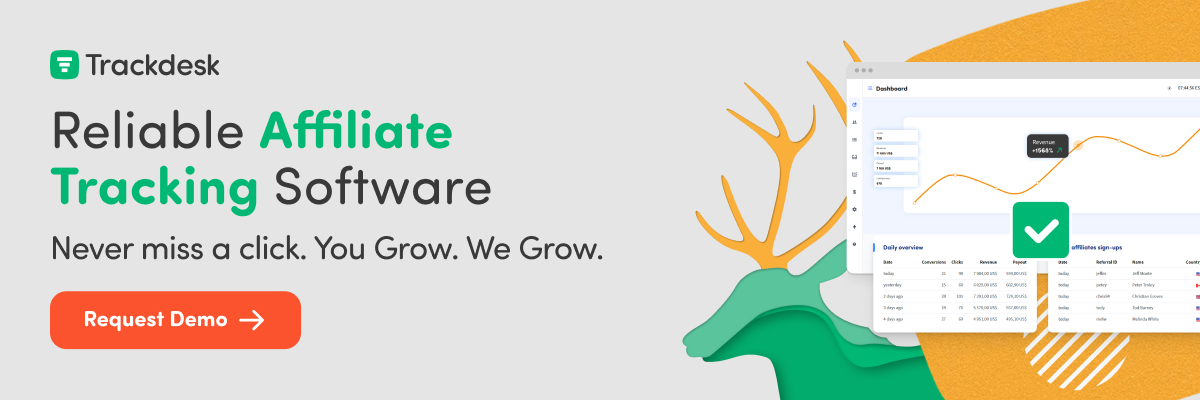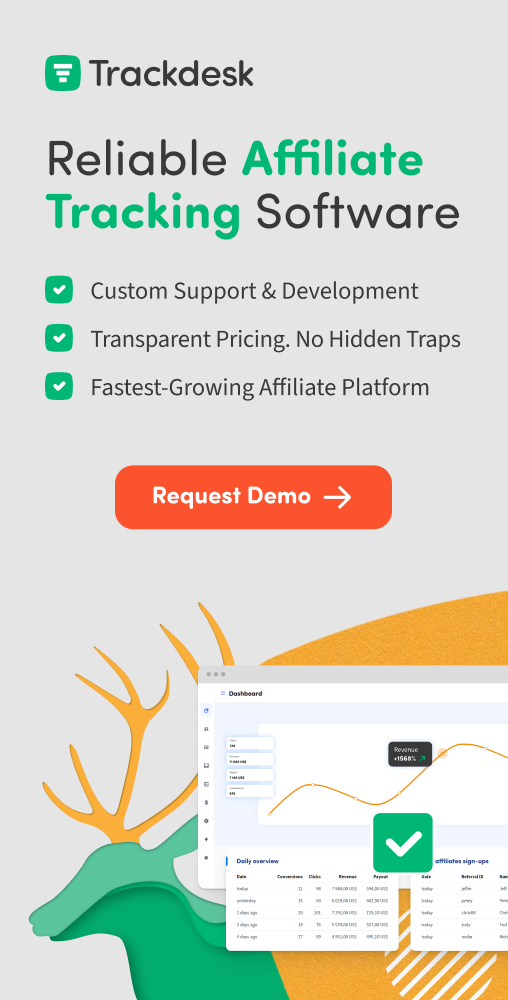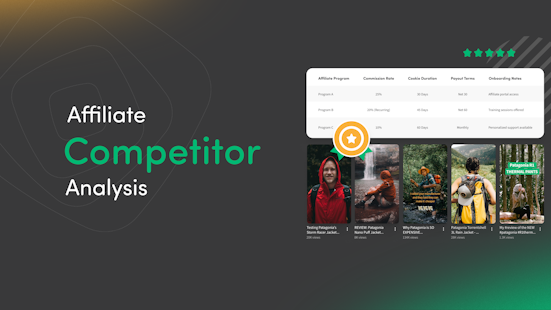
Affiliate Competitor Analysis: Steal What’s Working in 5 Steps
This affiliate competitor analysis guide shows you how to study rival programs, find their top affiliates, and build a better offer that stands out.
If you want a successful affiliate program, you need to know the answer to one question:
Why should an affiliate promote you over a competitor?
The best way to find that answer is to study what your competitors are doing and do it better—that’s the definition of affiliate competitor analysis.
And, with the help of AI, this process doesn’t have to be time-consuming or tedious.
This guide will walk you through a 5-step framework to research rival affiliate programs, uncover what’s working, and use those insights to shape a program that affiliates are excited to join.
Whether launching a new program or scaling an existing one, this is your blueprint.
1. Identify Your Top Competitors
You have to know who your competitors are if you want to analyze them. Make a list of 5–10 direct competitors who already have successful affiliate programs.
These could be companies offering similar products, targeting the same customer base, or investing heavily in affiliate partnerships.
If you don’t have this list already, here’s how to find your competitors:
Begin by searching Google using a phrase like “[niche or product] affiliate program” (i.e. “backpack affiliate program”). Jot down any strong competitors in a list or spreadsheet.
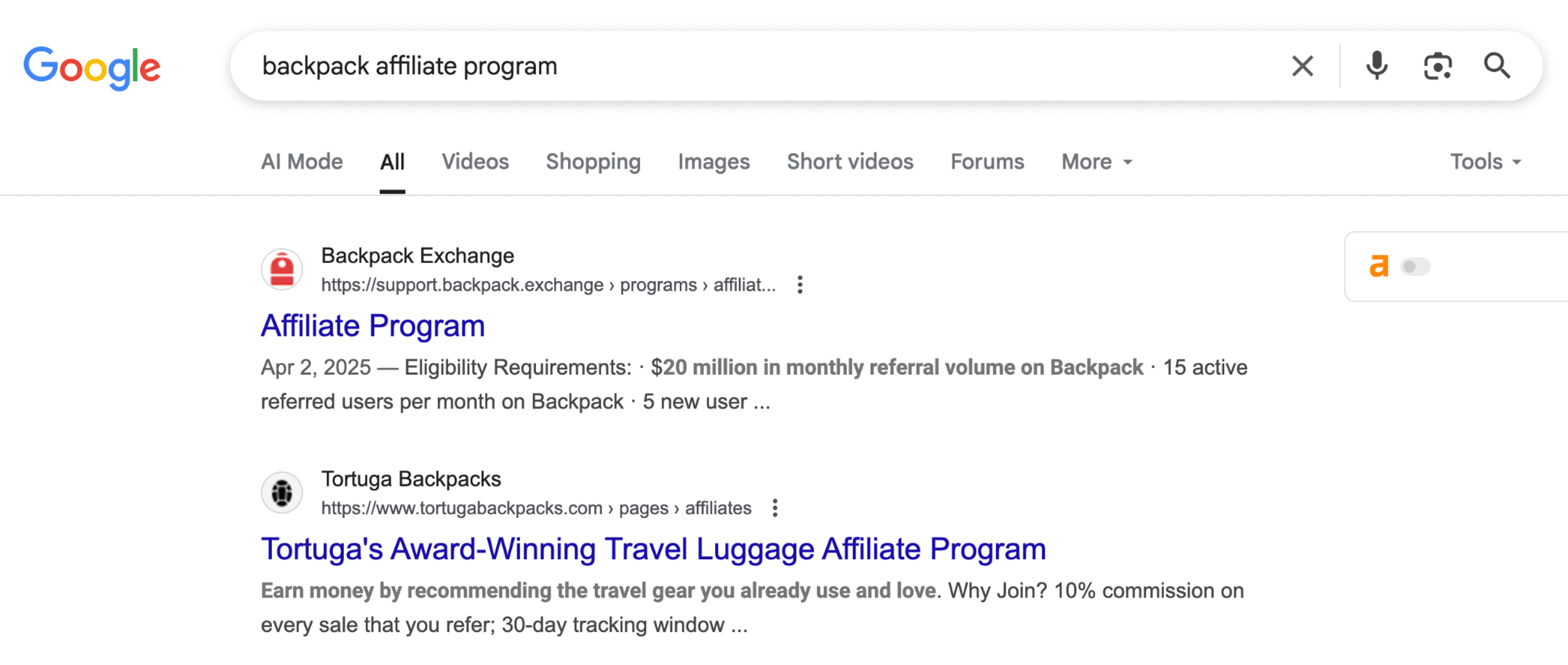
You can also find competitors by browsing affiliate directories like ClickBank or ShareASale or by looking for affiliate program roundups like the ones on Authority Hacker.
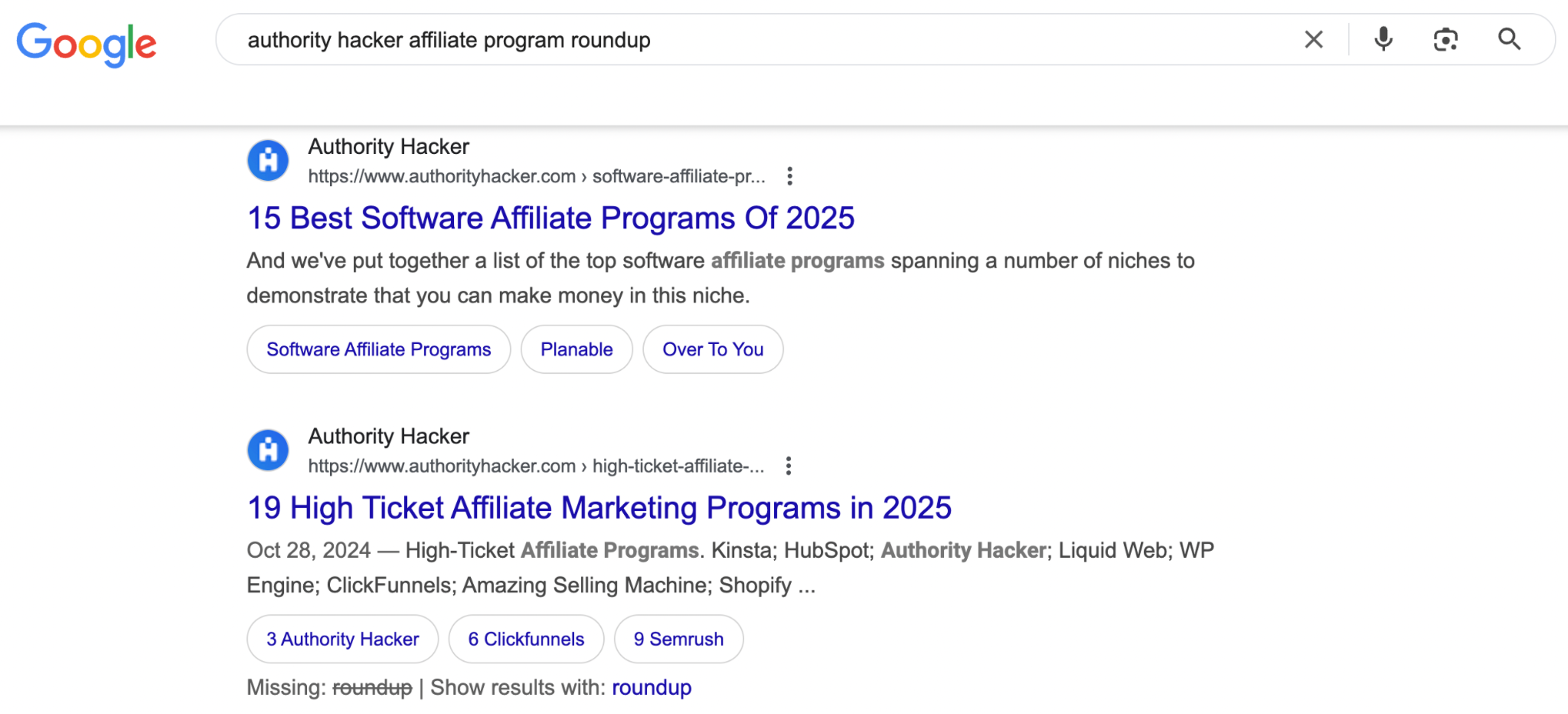
If you still need more competitors, you can ask an AI chatbot like Claude using the following prompt:
Help me find competing websites with successful affiliate programs. My website is [yourwebsite.com] and I sell [your product]. Some of my competitors are [competitorwebsite.com] and [competitorwebsite.com].
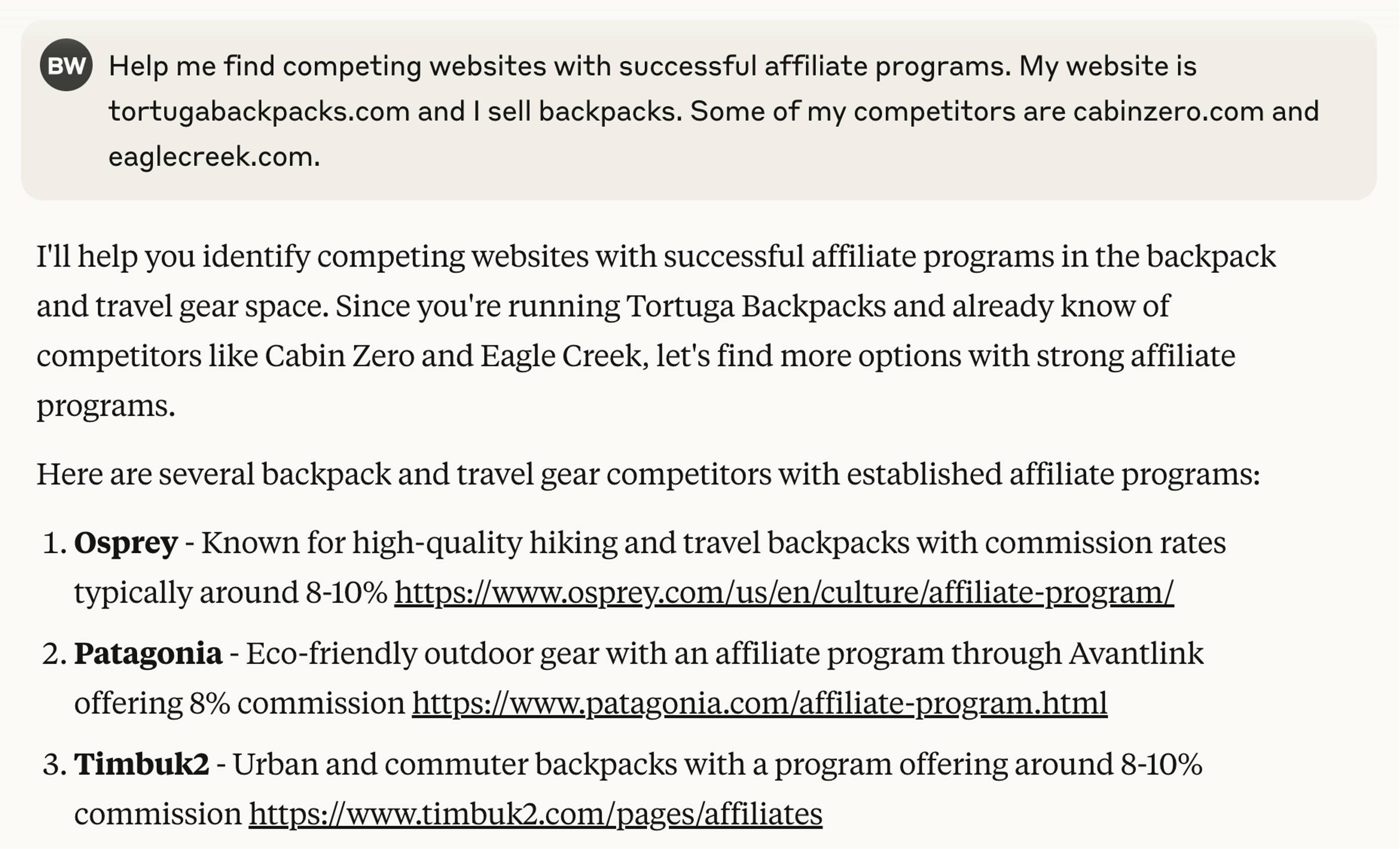
As a final tip—don’t limit yourself to obvious rivals.
Sometimes, niche influencers or tools quietly command affiliate attention without being household names. These are just as important to evaluate.
You can dig deeper with Claude by responding with another prompt like:
What are some other niche influencers or tools getting affiliate attention that aren’t household names?
Add all the relevant competitors you find to your list.
2. Study Their Affiliate Program Structure
To beat your competitors, you need to know what they’re offering—like their commission rates, cookie duration, and payment terms.
For each competitor, take note of their:
- Commission rates: Flat or percentage-based, recurring or one-time?
- Cookie durations: How many days does their cookie window last?
- Payout terms: Minimum thresholds, frequency, and payment methods
- Affiliate resources: Banners, swipe files, landing pages, co-branded assets
- Bonus structures: Leaderboards, performance tiers, seasonal contests
- Onboarding experience: Is it easy to sign up for their program?
Here’s an example of how you might track competitors and their program structure:
|
Affiliate Program |
Commission Rate |
Cookie Duration |
Payout Terms |
Onboarding Notes |
|
Program A |
25% |
30 Days |
Net 30 |
Affiliate portal access |
|
Program B |
20% (Recurring) |
45 Days |
Net 60 |
Training sessions offered |
|
Program C |
10% |
60 Days |
Monthly |
Personalized support available |
Consider signing up as a test affiliate for each of your competitors to see what their affiliate onboarding process looks like behind the curtain. This gives you an inside view of their dashboards, communications, and overall experience.
You can have AI create this spreadsheet for you as well. You could use Claude, but we got the best results from Perplexity. Here was our prompt:
Check the following affiliate program [URL to competitor’s affiliate program] and note down the following:
Commission rates: Flat or percentage-based, recurring or one-time?
Cookie durations: How many days does their cookie window last?
Payout terms: Minimum thresholds, frequency, and payment methods
Affiliate resources: Banners, swipe files, landing pages, co-branded assets
Bonus structures: Leaderboards, performance tiers, seasonal contests
The output should be in a table format with columns responding to each of the 5 dimensions mentioned above.
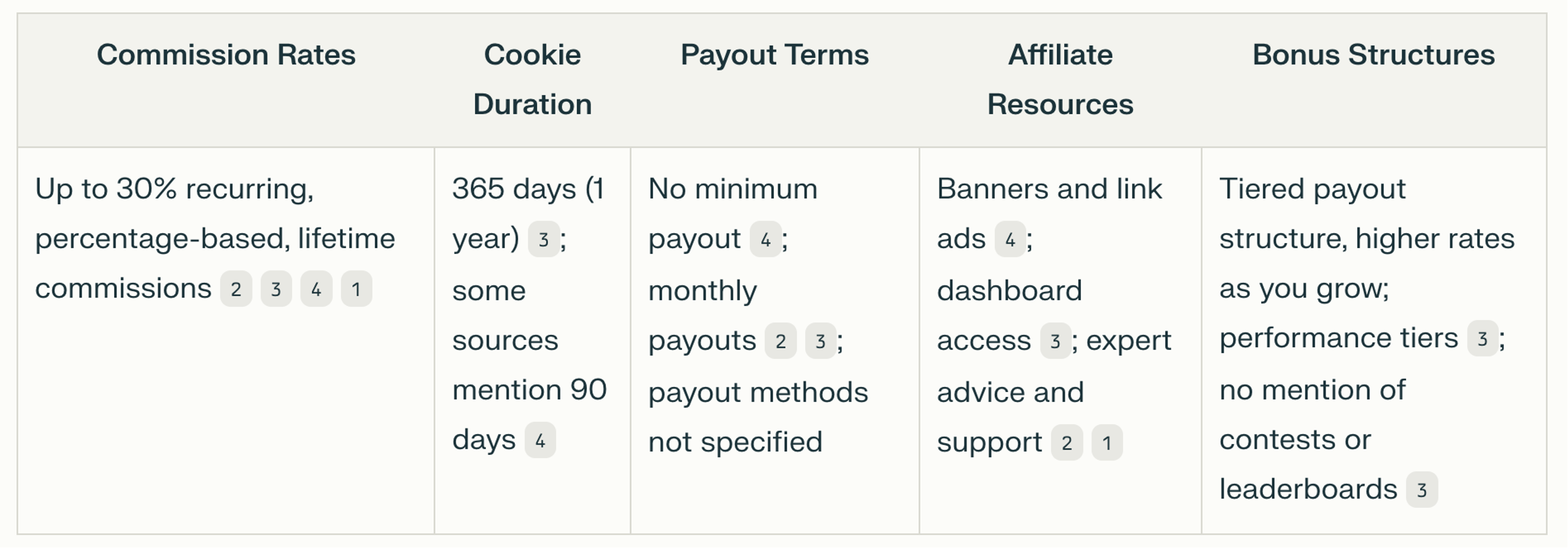
3. Find Your Competitor’s Top-Performing Affiliates
Now that you know their program terms, the next step is to uncover who is bringing in the most money for them so you can potentially steal their business—or at least see what’s working.
How to Find Competitor Affiliates
You can find competitor affiliates by searching platforms like Google and social media or asking AI.
Let’s break it down:
Ask AI. While not always effective, sometimes you can simply ask AI to tell you who your competitor’s top affiliates are. This is a great use case for the Deep Research feature in the paid ChatGPT subscription.
Deep Research allows the AI to go out and perform multiple searches, find the best sources, and compile all of that information for you in one place.
Here’s a prompt you can use:
Some of my competitors are [competitorwebsite.com] and [competitorwebsite.com]. Can you tell me who their top-performing affiliates are?
That simple prompt led to this chat, which identified several key affiliates for my competitors (and even additional details about how they acquired those affiliates, what is working well for them, and their overall affiliate strategy).
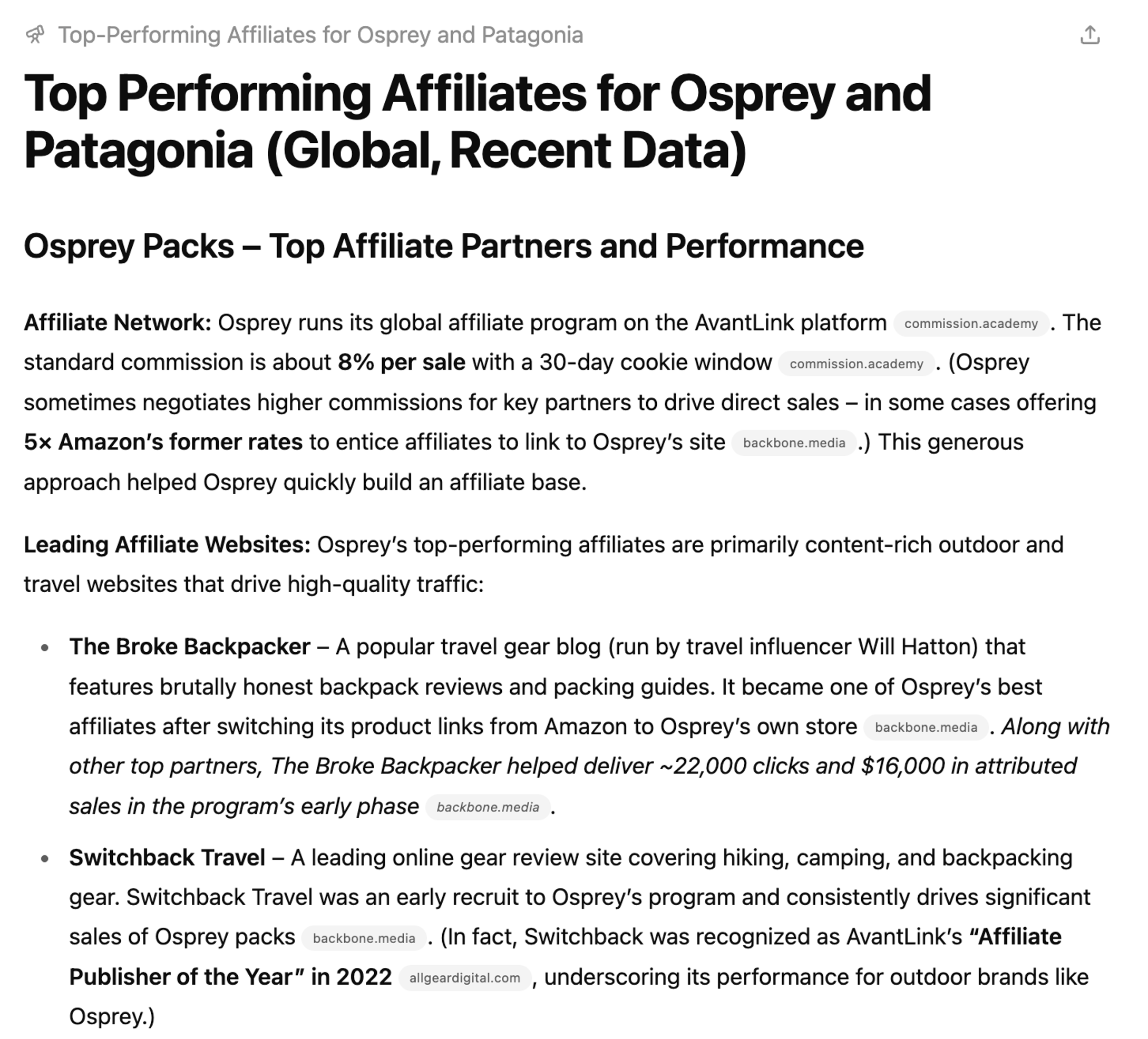
Search Google for "[competitor name] + affiliate" or "[competitor name] + review". For example, “patagonia review” brings up The High Route and iRunFar:
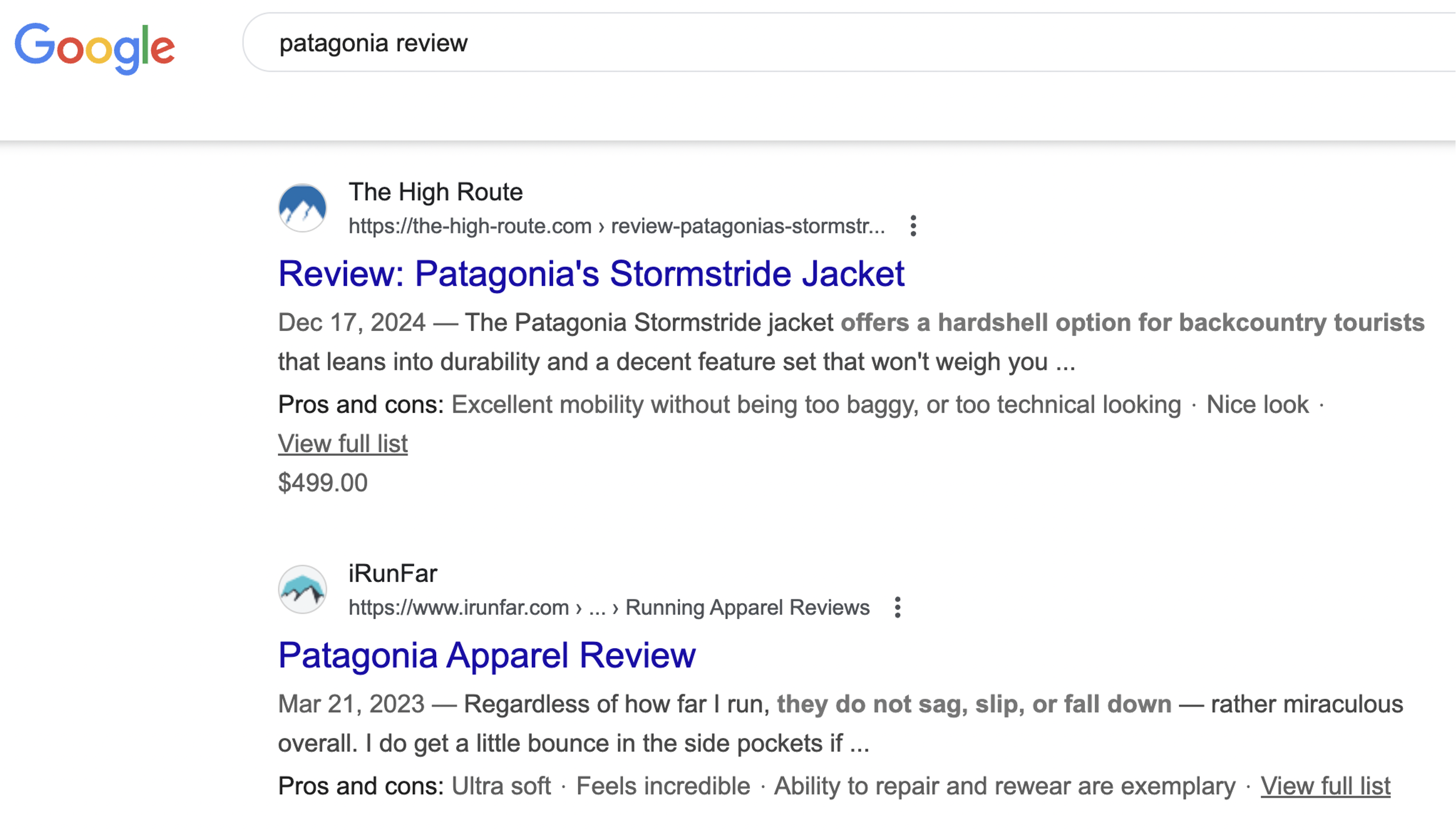
Search YouTube for "[competitor name] + review".
Here are some more results from “patagonia review”:
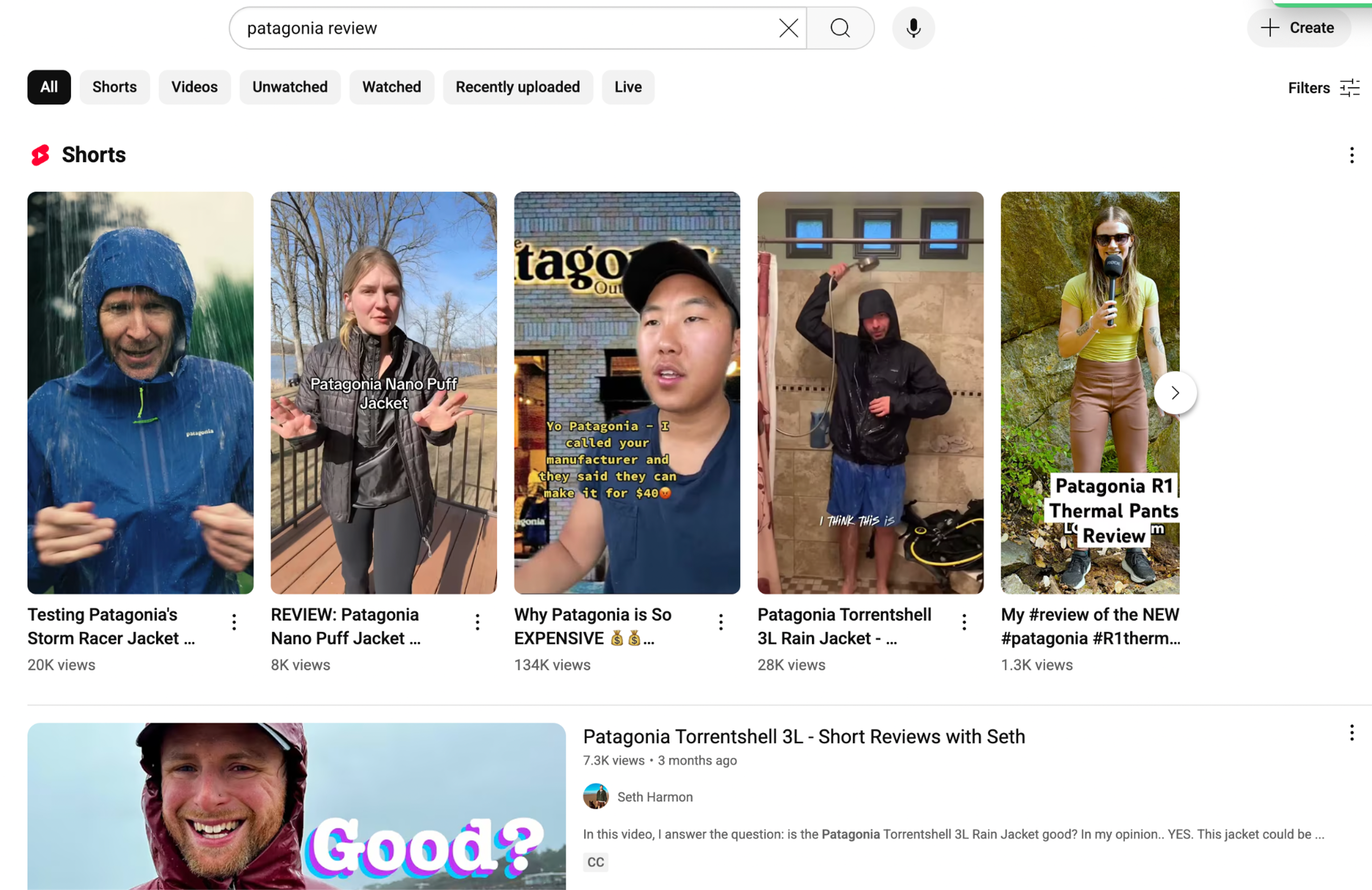
You should start to notice some trends as you evaluate their affiliates:
- Are they primarily bloggers, YouTubers, coupon sites, or social media influencers?
- What messaging are they using to convert readers?
- Are they using educational, comparison, or urgency-driven content (i.e. limited-time sales)?
Understanding their mix shows you what works in your vertical and where opportunities exist.
4. Evaluate Your Competitor’s Strengths & Weaknesses
Knowing what makes your competitor’s program attractive (and what could be improved) will help you create a better affiliate program.
Look at their public-facing program:
- Is it easy to find?
- How good is their product or service? Is yours better?
- Do they invest in design and messaging or does it look outdated?
- If you were an affiliate, would you want to promote them? Why or why not?
If your competitor is big enough, they’re likely being talked about by affiliates on places like Reddit or in articles online. Search things like:
- "[Competitor Name] affiliate program review"
- "[Competitor Name] affiliate payout issues"
- "[Competitor Name] partner complaints"
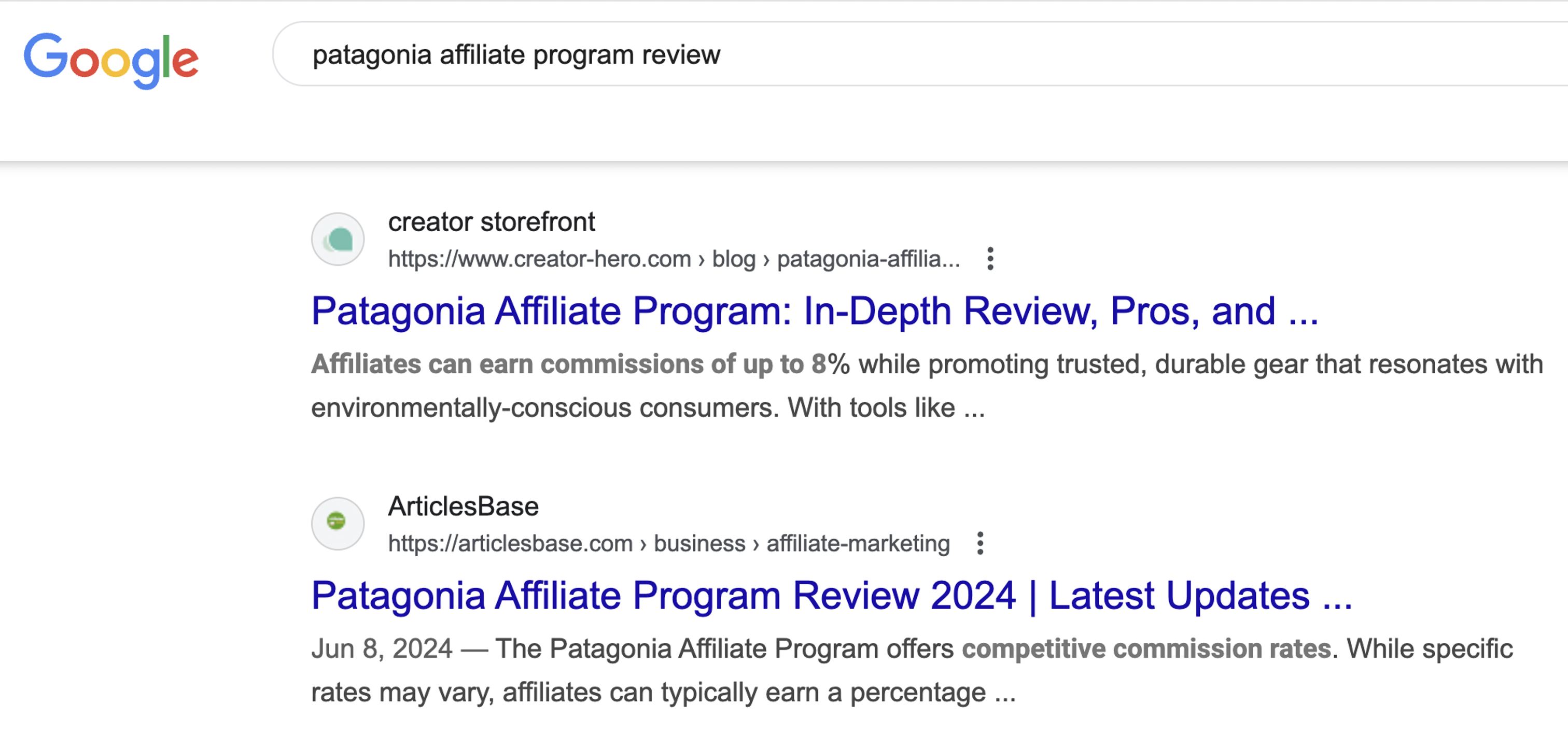
Take note of any major complaints or raving reviews. This is key intel for your program.
This is another great use of AI. Head back to Claude with a prompt like the following (note that you need a paid plan for it to perform a live search of the internet):
My competitors are [competitorwebsite.com] and [competitorwebsite.com]. My business is [yoururl.com].
Scan the internet to find any reviews of their affiliate program and summarize the pros and cons of those reviews. If you can’t find any reviews, do not make any up, just tell me you can’t find them.
I’d also like answers to the following questions:
Is their affiliate program easy to find?
How good is their product or service? Is mine better?
Do they invest in design and messaging or does it look outdated?
If you were an affiliate, would you want to promote them? Why or why not?
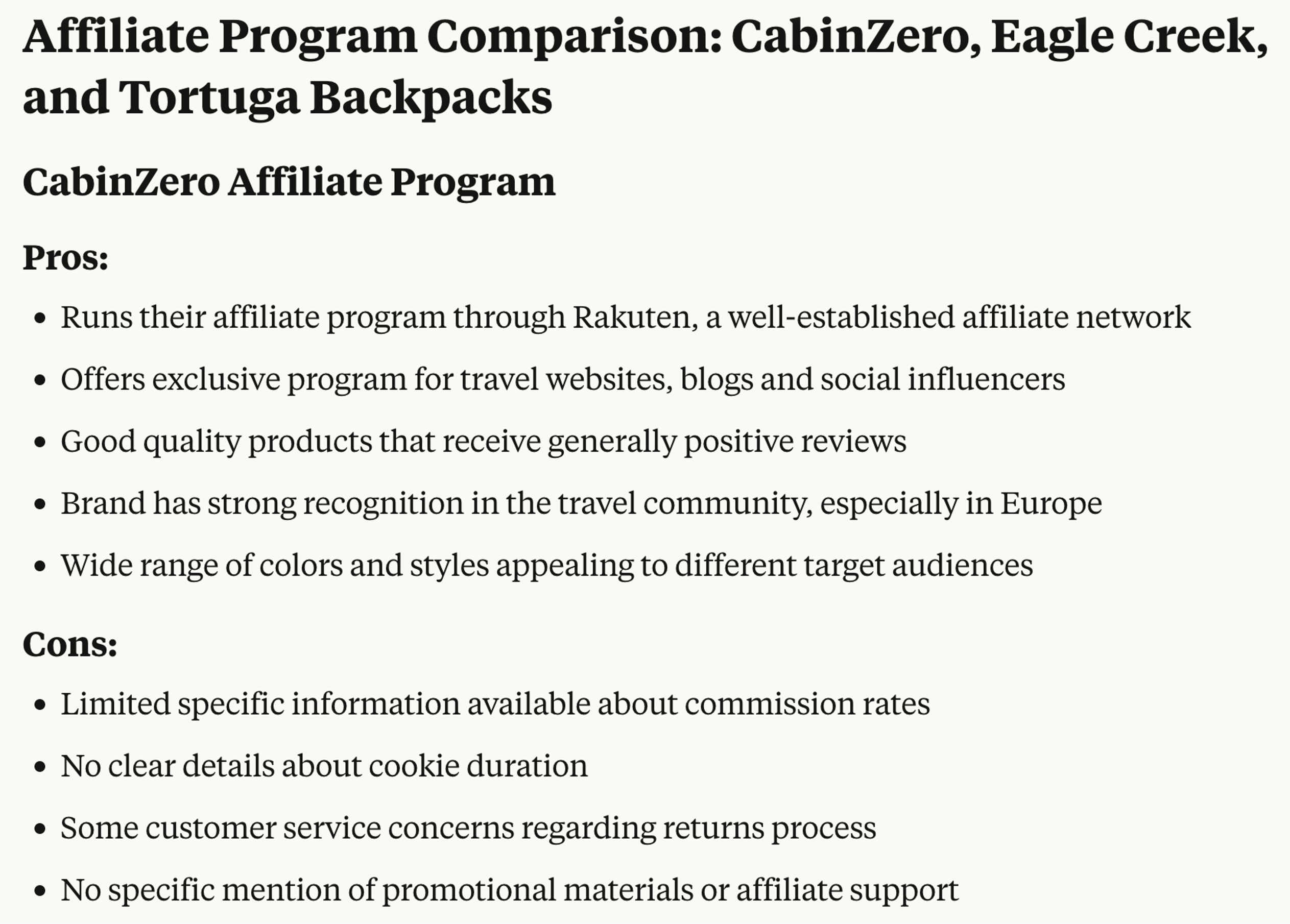
To take it a step further, reach out to their affiliates directly.
A simple message like, “Hey, I noticed you promote [brand]. How's it going? Anything you wish their program did better?” can uncover gold.
5. Position Your Program to Stand Out
Now that you’ve done all that research and analysis, it’s time to put it to use.
Ask yourself:
- Can we offer better commissions or cookie windows?
- Can we build a more supportive or personal affiliate experience?
- What unique value can we offer (e.g. custom landing pages, white-label resources)?
- Are we communicating our unique value clearly on the affiliate signup page?
- Is there anything else we can do to make our program better than the competition?
If you’re not sure how to answer that last question—is there anything else we can do—then I’d like to make a suggestion:
Make sure you have a solid affiliate onboarding experience and a great user interface.
If you want to beat your competition, you need a platform designed to function well AND look good. I can’t tell you how many brands I’ve worked with as an affiliate who used ugly and confusing software. It was difficult to use, which lost them business.
Enter: Trackdesk.
Trackdesk is the fastest-growing affiliate tracking platform in the world. Our UI is intuitive, easy to use, and beautiful—everything a thriving affiliate program needs.
The best part? You can sign up for free today.

Bill is a serial entrepreneur, business coach, affiliate marketer, and copywriter with a passion for creating content. When he's not busy beating the Google algorithm, you can find him hiking with his dog, at the gym, or singing karaoke.
